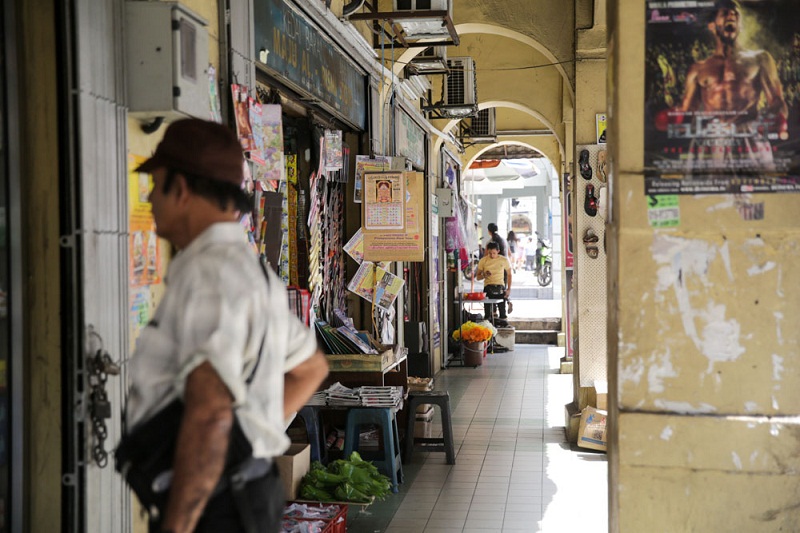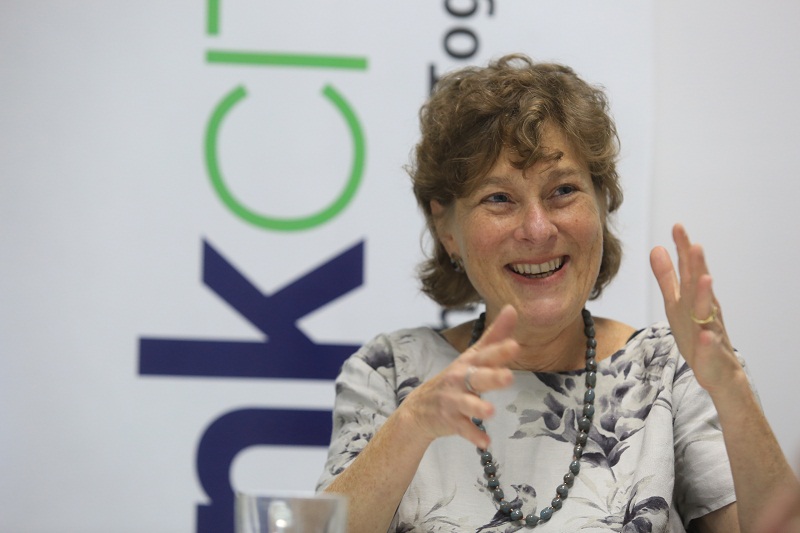KUALA LUMPUR, Oct 3 — How can Kuala Lumpur become a great city? How can it have successful developments and draw people in? How can it be a great place to live and work in?
Project for Public Spaces’ (PPS) Cynthia Nikitin has the answer: “Great cities are defined by great public spaces.”
And to create great public spaces, city planners and developers have to use the placemaking approach which emphasises engagement with the local community to ensure success, Cynthia said.
“So if a city wants to be world class, if a city wants to be a destination, if a developer wants a successful project that is fully leased and full of people, you have to think about creating the destinations and places that people want to be at,” the senior vice-president of the New York-based non-profit group told Malay Mail Online and two other publications in a recent group interview.
“Another reason to do placemaking, it’s really about people, and cities really need to be designed for people and by people who live there,” she said, putting it as an alternative to the profit-minded approach of designing and building projects without community input, that ironically sometimes fail to attract people and result in failed expensive investments.
The placemaking approach runs in the complete opposite direction of how city authorities and developers have been planning and developing in the West for the past 50 years, Cynthia said. A mistake that she hopes other cities don’t follow.
“And I think a lot of cities all over the world are following that model, they are replicating a failed experiment, no scientist in his right frame of mind will replicate a failed experiment, but we are doing that on a big scale globally,” she said.
“So placemaking is a way of turning that around and going back to designing in a way that makes sense, that supports human life, that supports human habitat, that builds civil society, that create safe, inclusive, welcoming public spaces.”
Explaining the placemaking approach, Cynthia said the community is engaged from the beginning of a project, instead of just minutes before construction begins.
“Placemaking is about crowd-sourcing info in the beginning. It’s about asking people in the place, in the community, in the city—what do they want to see, what are their goals, what is their vision for the city, what is their vision for that public space, taking that input and designing to meet the needs and vision of the community,” she said.
The placemaking approach also prevents the costly exercise of seeking community input after the design is completed, where public opposition may well mean several trips to the drawing board and may even result in some projects never taking off, she said, citing the US’ New Jersey Department of Transportation’s experience as an example.
The emphasis on the failed model of city planning is on cars and moving traffic as fast as possible, when it should also be on pedestrians, cyclists and transit users, as 70 per cent of public spaces in cities are on streets and roads, she said.
To fulfill the branding of cities such as safe, green, and clean, public spaces have to be walkable and well-connected destinations.
“So part of the challenge here is to look at the street network, to look at the crossings, to look at distances between traffic lights, to look a the five-foot ways, the sidewalks and how you kind of create and design roads to support walking and biking and transit,” she said.
Cynthia shared one of PPS’s most successful experiments in the US to give the streets back to the people, where Broadway was closed off to cars after traffic studies were done and turned into a pedestrian plaza with bikeways.
“And you get more footfalls, you get more foot traffic, and the businesses see more customers and they make more sales and the value of properties increase and the business owners improve the facades, and then the entire neighbourhood is sort of enhanced,” she said when speaking of the positive knock-on effect of such methods.
“So a place to start is do you need all the roads in your cities to be that wide and to move traffic as fast as possible all the time, so that’s one question to ask yourself? And are there spaces that are traffic islands that can be turned into public spaces or public plazas?” she asked.
How can these lessons be applied to Kuala Lumpur?
Cythia points out two aspects that can be looked at for Kuala Lumpur, namely, slowing down the speed of development and carrying out small-scale projects to take back and transform public spaces.
She noted the “unbelievable” and “breathtaking” speed at which Malaysia carries out developments, where time may typically be required for community engagement and environmental review processes to look at the impact on things such as traffic patterns and parking.
“So you don’t necessarily do that, you don’t necessarily have time to do it, you just kind of design it, build it and then it’s done, so the speed, can you slow down a little bit? Do you have to build that fast and that much, you are also building everything all at once, we like to do things a little more incrementally,” she said.
The beauty of placemaking is that it can be done at any scale—even in bite-sized pieces—and anywhere, including intersections, pockets parks, train stations and bus stops.
Cynthia cited as an example how PPS turned one of 40,000 bus stops in Los Angeles county into a lively gathering spot for the neighbourhood in six months, successfully drawing business owners to the area.
“Masterplan starts big and never really trickles down. Placemaking starts at the human scale and you replicate it and like pebbles in a lake, it ripples outward,” she said, using the Los Angeles bus stop as an example of how a city could be transformed if the community uses a similar approach to reclaim numerous small public spaces.
“Placemaking is an amazingly creative and inexpensive way of solving problems,” she said, sharing the anecdote of how behaviours were changed by placing shrines in an alleyway in Penang that was used by drug users and urinated in by the public.
PPS, which partners Khazanah Nasional’s Think City in the latter’s urban renewal projects here, is already eyeing the Wisma Central building along Jalan Ampang as a potential pilot placemaking project.
According to Cynthia, Wisma Central is a unique building that is affordable, accessible, has culture and potential space for entrepreneurship, with the challenge laying in the preservation of its character while upgrading its design, lighting and ventilation for greater appeal and comfort.

“We never scrap the slate clean. We don’t believe in it, we believe in taking assets that are there, whether it’s human, economic, cultural, heritage, transportation, whatever the assets are and just build on them, build on what you got.
“Don’t try to start from scratch and try to import it because that doesn’t usually work,” she said, adding that PPS provides technical support as local partners give context to placemaking approaches.
According to the Kuala Lumpur City Hall (DBKL) website, its vision for Kuala Lumpur is for it to be a world-class city, with the aspects of living environment, working environment, business environment and city governance covered under this vision.
Think City signed a memorandum with DBKL last December to work together on a three-year rejuvenation programme for downtown KL, with the two also putting up a pop-up garden in between two DBKL buildings this January to demonstrate that any public space can be transformed.




















